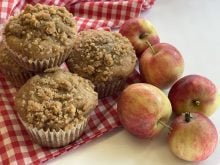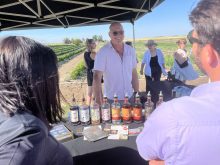During this time of recession and potential cuts, we need to manage our limited resources well.
By definition, in my Funk and Wagnall’s college dictionary, an economist is one who is careful and thrifty. Home economics is the science that deals with the production, distribution and consumption of the wealth of the home and of the means of supplying the material needs of the family.
The source of much of the economic woes of the United States can be found in the homes of America, where the consumer debt was enormous and home mortgages were given to individuals who had no realistic means of maintaining them.
Read Also

Vintage power on display at Saskatchewan tractor pull
At the Ag in Motion farm show held earlier this year near Langham, Sask., a vintage tractor pull event drew pretty significant crowds of show goers, who were mostly farmers.
Perhaps one of the first lessons to be learned from this economic downturn is the need for better management of the individual’s and family’s resources.
Empowerment in the digital world
This will be the key theme of world home economics day for the next three years, from 2009–12. The day is celebrated on March 2 each year. From home economics beginnings at the end of the 19th century, the aims were to strengthen the well being of individuals, families and communities, and to facilitate the development of attributes for lifelong learning and living situations.
The International Federation for Home Economics (IFHE) is a global network of home economics experts. It is an international non-governmental organization that has consultative status with the United Nations and the Council of Europe. Home economics content draws from multiple disciplines and synthesizes all the knowledge.
IFHE supports the UN Decade of Education for Sustainable Development that started in 2005. It wants to build the following:
- Public understanding of the principles behind sustainability.
- Lifelong learning for all.
- Relevance to all nations, particularly in addressing the social, environmental and economic knowledge, skills, perspectives and values inherent in sustainability.
The IFHE said it has special connections to gender equality, health promotion, environment and rural development. For more information, visit www.ifhe.org.
U of S website
Formal instruction in home economics began at the University of Saskatchewan in 1916. The household science department became a school in 1928, a college in 1942, and in 1952 was renamed the College of Home Economics. The college was disestablished in 1990, with the home economics teaching continuing in the College of Education and the nutrition program in the College of Pharmacy.
In 2006, a home economics display project was undertaken to gather memorabilia and class photos and create a searchable website at www.homeeconomics.usask.ca. This website and campus displays document and celebrate the contributions of the College of Home Economics to its 1,675 graduates and the U of S.
All alumni from the College of Home Economics are invited to attend a special reunion celebration June 19-20. This is an opportunity to celebrate the completion of the home economics display in the lobby of the Thorvaldson Building.
To register for the reunion weekend, visit www.usask.ca/alumni/stay_connected/reunions/index.html.
The Home Economics Alumni Advisory Committee produces Reconnecting, a newsletter that is posted on the website. The 2009 issue was just recently posted. No copies are sent by regular mail.
Home economics symposium
This year, Saskatoon is hosting the 10th annual symposium for home economics/family studies educators across Canada. It provides a forum for sharing information, research and action planning to strengthen the future of home economics/family studies education. The symposium is March 27- 29. For more information, visit www.canadiansymposium.org.
Peanut butter nutrition
Not only is peanut butter delicious, but it also has many health benefits. It is a source of protein and vitamins B3 and E. Peanuts also contain magnesium, folate, dietary fibre and arginine.
Peanut butter can also be used as:
- A common, simple outdoor bird feeder can be made by coating a pine cone once with peanut butter, then again with birdseed.
- A folk remedy for the removal of chewing gum from clothing and hair is to apply creamy peanut butter to the gum.
- Peanut butter is commonly used as a bait for mousetraps.
- PlumpyÃnut is a peanut butter-based food used to fight malnutrition in famine-stricken countries. A single pack contains 500 calories, can be stored unrefrigerated for two years, and requires no cooking or preparation.
From Wikipedia, the free on-line encyclopedia.
Thai dipping sauce
A friend who likes hot Thai food gave me this recipe that she likes to use as a dipping sauce for grilled shrimp or fish. It would also be good with spring rolls. If you don’t like things too hot, reduce the amount of cayenne pepper.
Thai peanut butter sauce
1/3 cup hot water 75 mL
2/3 cup peanut butter 150 mL
1/3 cup soy sauce 75 mL
2 tablespoons lemon juice 25 mL
1 teaspoon cayenne pepper 5 mL
1/4 cup light corn syrup 60 mL
1/4 cup dry sherry 60 mL
Mix all of the ingredients in a large bowl and stir well.
First Nature Farms
Jerry Kitt of First Nature Farms lives in an area that’s rich in wildlife. To this mix he adds beef cattle, bison, pigs, poultry and one milking cow. The livestock are rotated on pasture as long as the weather permits.
The pigs, are “my cultivators and manure spreaders,” he said.
“I raise the poultry from May to December, so they go on lush grass right away.”
Their portable pens are moved through the fields with a tractor. Wherever the poultry has been pastured, the grass grows back thick and lush and the bison love these spots. First Nature Farms sells its products only at Old Strathcona Market in Edmonton.
Bison spaghetti sauce
2 onions
4 carrots
1 clove garlic
1/4 cup olive oil 60 mL
1 to 2 pounds ground bison 0.5 –1 kg
8 lb. fresh organic tomatoes 4 kg
3 Tbsp. Italian seasoning 45 mL
salt and pepper (to taste)
Finely chop the onions, carrots and garlic.
Heat oil in a large pot. Sauté onions and carrots until onions are transparent.
Add bison, and cook until brown. Add garlic, tomatoes and seasoning.
Cook for six hours over low heat. Add water as it cooks, if needed. Adjust seasoning.
Serves six to eight.
Sunny Boy
Sunny Boy Cereal may have started as a healthy, hot cereal, but now it also mills flours and pancake mixes in Camrose. Though it has only been running a certified organic mill for one year, the history of the mill is significant.
When the Byers family first started milling flour in 1926, it used local grain and milled whole wheat flour. Today at Sunny Boy Foods Ltd., it continues in that tradition. With organic certification, it can guarantee organic products for consumers. The mill hopes to expand the types of organic grains milled.
Sunny Boy bread
31/2 cups Sunny Boy organic 875 mL
unbleached flour 21/2 cups Sunny Boy 625 mL whole wheat flour
2 tablespoons active dry yeast 30 mL
3 cups milk 750 mL
1/3 cup brown sugar 75 mL
2 teaspoons salt 10 mL
3 tablespoons vegetable oil 45 mL
Combine the flours, then place three cups (750 mL) of flour and yeast in a large mixing bowl.
Combine the milk, sugar, salt and oil and mix well. Warm the liquid; then add to the above dry ingredients. Beat for three minutes until smooth, then slowly add the remaining flour.
Turn the dough onto a floured surface and knead the dough for five minutes.
Form dough into a ball and place into a greased bowl. Cover and let rise in a warm location until double in size, approximately 40 minutes.
When dough is ready, punch down, divide in half and form two balls. Let rest for 10 minutes.
Shape into two loaves and place in bread pans. Cover and let bread loaves rise in a warm location until double in size, approximately 30 minutes.
Bake in a preheated oven at 400 F (200 C) on a centre rack for 10 minutes; then reduce heat to 350 F (180 C). Bake for 25 minutes.
Remove from hot pans and place on a wire rack to cool.
For bread machines, use the recipes developed for your specific machine.
Betty Ann Deobald is a home economist from Rosetown, Sask., and one of four columnists comprising Team Resources. Send correspondence in care of this newspaper, Box 2500, Saskatoon, Sask., S7K 2C4 or contact them at team@producer.com.
















